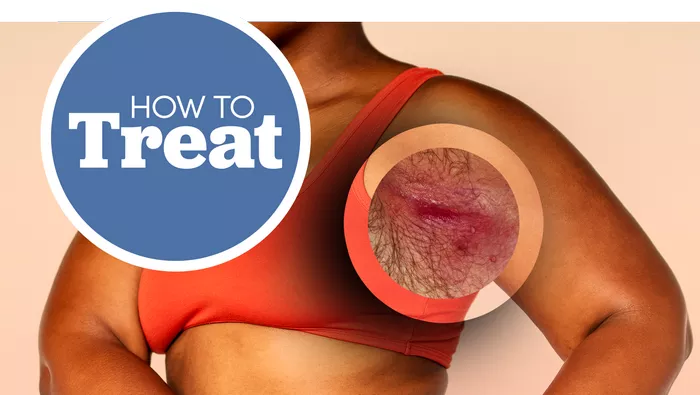Hidradenitis suppurativa (HS) is a chronic skin condition characterized by the development of painful, inflamed lesions in areas where skin rubs together, such as the armpits, groin, buttocks, and under the breasts. The exact cause of HS is not fully understood, but it is believed to involve inflammation of hair follicles and sweat glands. While the factors contributing to HS are multifaceted, there has been speculation about the role of hair removal methods, particularly waxing, in triggering or exacerbating this condition.
What is Hidradenitis Suppurativa?
Before delving into the potential link between waxing and HS, it’s important to grasp the basics of this challenging dermatological condition. Hidradenitis suppurativa typically manifests as painful, recurrent nodules and abscesses that can lead to the formation of sinus tracts and scarring. These lesions often discharge pus and can cause significant discomfort and emotional distress for affected individuals.
The precise causes of HS are not definitively established, but several factors are believed to contribute:
1. Hair Follicle Obstruction: One prevailing theory suggests that HS begins with blockage and inflammation of hair follicles, leading to the formation of cysts and abscesses.
2. Immune System Dysfunction: Dysregulation of the immune system may play a role in the development and persistence of HS.
3. Hormonal Factors: Hormonal imbalances, particularly involving androgens, may contribute to the pathogenesis of HS.
4. Genetic Predisposition: HS often runs in families, suggesting a genetic component to the disease.
The Role of Hair Removal
Hair removal methods, including waxing, shaving, and laser treatments, are common practices among individuals seeking smooth, hair-free skin. However, the impact of these methods on skin health, particularly for those susceptible to conditions like HS, warrants closer examination.
1. Waxing and Potential Irritation: Waxing involves the removal of hair from the root using hot wax, which adheres to the hair and is then quickly pulled off, along with the hair shaft. While this method can provide longer-lasting results compared to shaving, it can also lead to skin irritation and trauma, especially in sensitive areas. The process of waxing may disrupt hair follicles and expose the skin to potential infections, which could theoretically trigger or worsen inflammatory conditions like HS.
2. Friction and Skin Trauma: In individuals prone to HS, repeated trauma to the skin through hair removal techniques like waxing could potentially exacerbate the inflammatory response. Friction and irritation caused by waxing may contribute to the obstruction of hair follicles, a hallmark feature of HS.
Scientific Evidence and Clinical Observations
Research specifically linking waxing to the development or worsening of HS is limited. However, studies have explored the broader impact of hair removal on skin health and inflammatory conditions.
1. Study Findings on Hair Removal and HS: A systematic review published in the Journal of the European Academy of Dermatology and Venereology in 2020 analyzed available evidence on the relationship between hair removal and HS. The review concluded that while there is no direct evidence linking waxing to HS, hair removal practices that cause skin irritation and trauma may contribute to the exacerbation of existing lesions in individuals with HS .
2. Clinical Perspectives: Dermatologists and healthcare providers who specialize in treating HS often advise patients to adopt gentle skincare practices to minimize irritation and trauma to the skin. While waxing may not directly cause HS, it could potentially aggravate existing lesions or contribute to flare-ups in susceptible individuals.
Practical Recommendations for Individuals with HS
If you have HS or are concerned about the impact of hair removal on your skin health, consider the following recommendations:
1. Consult a Dermatologist: Seek guidance from a dermatologist or healthcare provider specializing in HS for personalized advice on skincare and hair removal methods.
2. Opt for Gentle Hair Removal Techniques: Choose hair removal methods that minimize trauma to the skin, such as gentle shaving or depilatory creams.
3. Practice Good Skincare: Maintain a consistent skincare routine that includes cleansing and moisturizing to help manage inflammation and reduce the risk of infection.
4. Monitor Skin Health: Pay attention to changes in your skin and promptly report any new or worsening symptoms to your healthcare provider.
Conclusion
While the direct relationship between waxing and the development of hidradenitis suppurativa remains unclear, individuals with HS should approach hair removal practices cautiously to minimize the risk of exacerbating symptoms. Understanding the potential impact of hair removal techniques on skin health is crucial for effective management of this challenging condition. Further research is needed to elucidate the complex interactions between hair removal methods, skin inflammation, and conditions like HS. In the meantime, adopting gentle skincare practices and seeking professional advice can help individuals with HS navigate their skincare routines effectively.
Related Topics:
The Impact of Hidradenitis Suppurativa on Fatigue

























